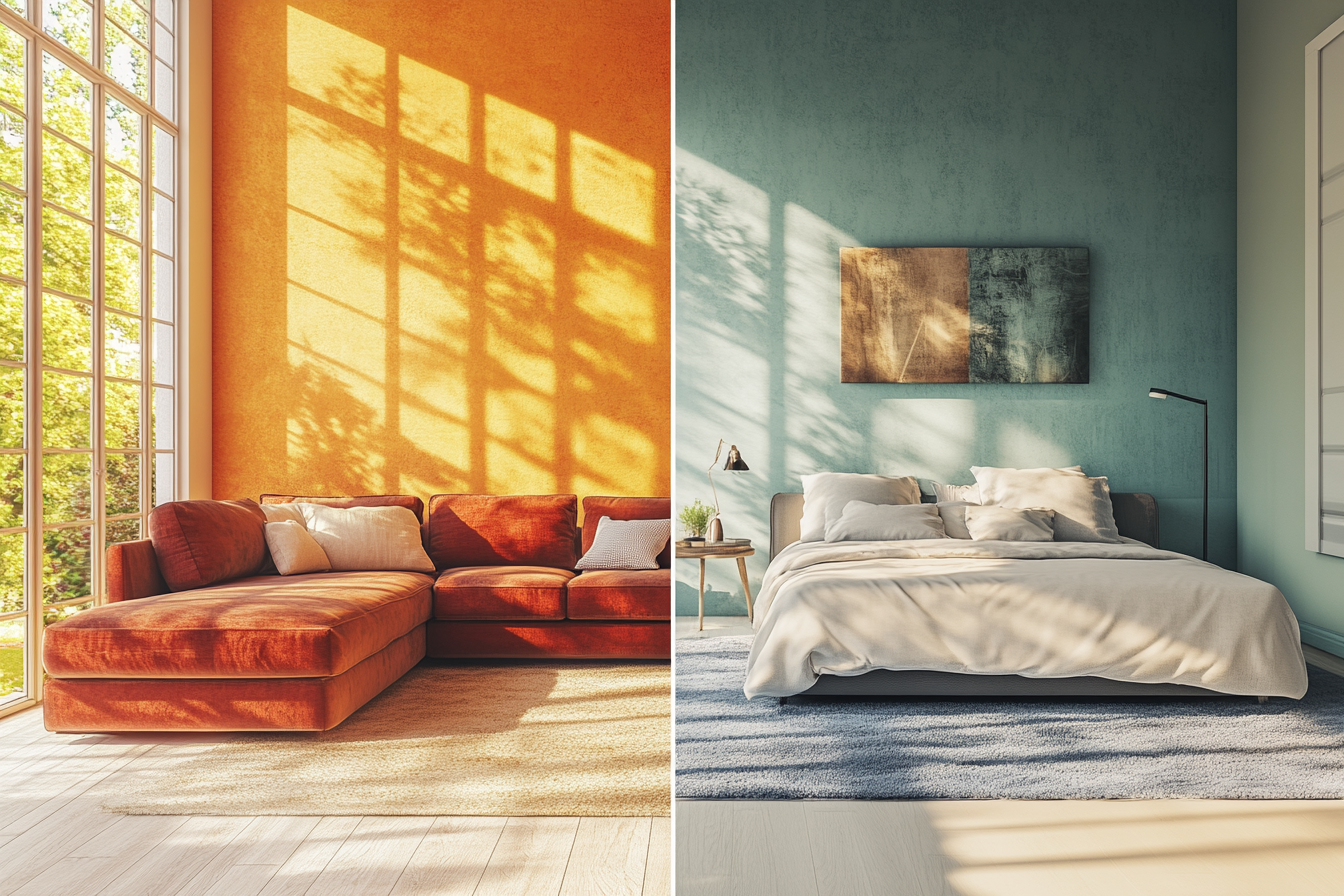Interior Design & Psychology
Stimulating the Five Senses for Mental Wellness
In today’s fast-paced world, our surroundings play a crucial role in shaping our mental well-being. Interior design is not just about aesthetics—it has the power to influence our emotions, productivity, and overall psychological health. By thoughtfully stimulating the five senses—sight, touch, sound, smell, and taste—we can create spaces that enhance relaxation, focus, and happiness.
1. Sight: The Power of Colors and Visual Harmony
Color psychology is one of the most influential aspects of interior design. Different colors evoke different emotions and responses:
Warm tones (reds, oranges, yellows): Energizing and stimulating, great for social spaces like dining areas.
Cool tones (blues, greens, purples): Calming and soothing, ideal for bedrooms and relaxation zones.
Neutrals (whites, grays, beiges): Provide balance and flexibility, suitable for creating a timeless and elegant atmosphere.
Research from the American Psychological Association (APA) highlights that color psychology plays a significant role in emotional regulation and cognitive performance. Studies suggest that cool colors like blue and green can lower stress levels, while warm tones boost energy and social interaction (American Psychological Association, 2021).
Beyond color, a space's organization and flow contribute to mental wellness. Cluttered environments can lead to stress, whereas open, airy layouts promote clarity and peace of mind. Natural light also significantly regulates mood by boosting serotonin levels and enhancing focus.
2. Touch: Textures that Comfort and Ground Us
Tactile elements in design affect our experience of a space. Soft textures like velvet and wool promote comfort, while natural materials like wood and stone create serenity. Layering textures adds depth and a sensory experience. For example:
Smooth surfaces (glass, polished wood) evoke a sense of sleekness and modernity.
Rough textures (brick, unpolished stone) add rustic charm and warmth.
Soft fabrics (plush rugs, linen curtains, upholstered furniture) invite relaxation and coziness.
3. Sound: Crafting an Acoustic Ambiance
Sound affects atmosphere. Noise pollution from traffic or echoes can stress, while thoughtful acoustic design promotes calm and focus. To enhance soundscapes:
Soft furnishings like carpets, curtains, and upholstered furniture absorb excess noise and create a quieter environment.
Water features or indoor fountains introduce soothing background sounds, reducing stress and promoting relaxation.
Nature-inspired soundscapes (such as birdsong, ocean waves, or gentle instrumental music) can help improve concentration and mental well-being.
The Journal of Environmental Psychology has published multiple studies showing how sensory stimuli—such as background noise and scent—can influence emotions, memory retention, and even productivity. Scents like lavender have been scientifically linked to reduced cortisol levels, helping to alleviate stress and improve relaxation (Herz, 2016).
4. Smell: Harnessing the Power of Scents
Our sense of smell is directly connected to the limbic system, which regulates emotions and memory. Certain scents have the ability to uplift, relax, or energize
The Journal of Environmental Psychology has published multiple studies showing how sensory stimuli—such as background noise and scent—can influence emotions, memory retention, and even productivity. Scents like lavender have been scientifically linked to reduced cortisol levels, helping to alleviate stress and improve relaxation (Herz, 2016).
Lavender, chamomile, sandalwood: Promotes relaxation and stress relief, and is ideal for bedrooms or meditation spaces.
Citrus scents (lemon, orange, grapefruit): Boost energy and mood, perfect for workspaces and kitchens.
Vanilla, cinnamon, or cedarwood: Evoke warmth and comfort, enhancing a cozy and inviting atmosphere.
Using scented candles, essential oil diffusers, or fresh flowers can subtly transform the ambiance of a space, making it feel more personalized and emotionally enriching. The National Institutes of Health (NIH) has documented the strong link between scent and emotional well-being, showing how aromas influence mood, memory, and stress levels (NIH Study).
5. Taste: Designing for a Sensory Experience
Taste influences interior design, enhancing our spatial experience. A well-designed dining or kitchen area promotes mindful eating and social interaction, while materials, lighting, and seating arrangements elevate our enjoyment of meals.
Comfortable, well-proportioned seating invites longer, more enjoyable meals.
Natural materials like wooden tables and ceramic dishes enhance the dining experience by creating a warm, inviting setting.
Soft, warm lighting encourages relaxation and conversation while dining.








